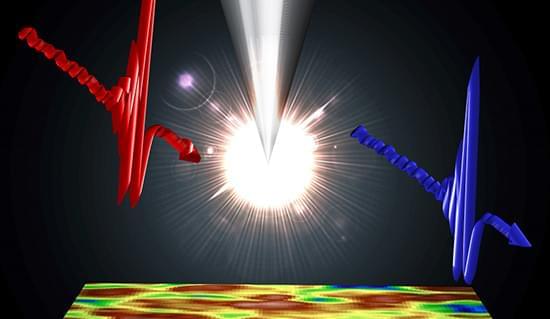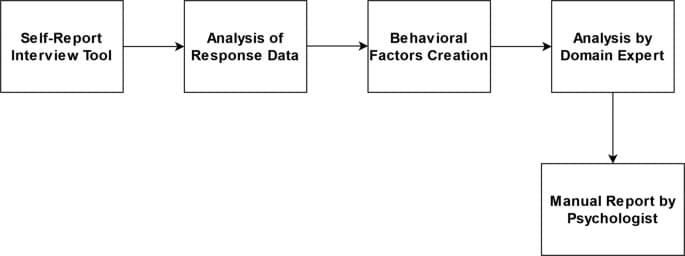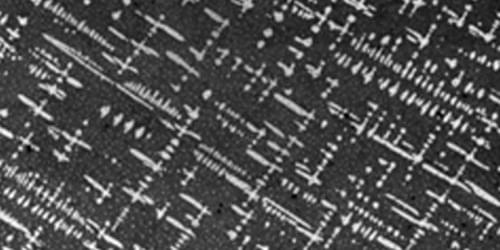Microscopy data suggest that degradation starts from grain boundaries and propagates inwards.
Large-capacity wireless data transmission systems are demanded along with the development of multimedia services, video-based interactions, and cloud computing in the era of big data. Compared with radio-frequency communication systems, free-space optical (FSO) signal transmission technology has the merits of high data rate, great flexibility, less power consumption, high security, and large license-free bandwidths [1– 3], which has been widely applied in terrestrial transmission [4], last mile solutions [5], ground-to-satellite optical communication [6], disaster recovery [7], and so on. To date, up to 10 Gbit/s FSO communication system has been realized for transmission distance over 1,000 km of star-ground or inter-star communications [8], and 208 Gbit/s terrestrial communication is also reported at 55 m transmission distance [9]. Wavelength-division multiplexing (WDM) technology is commonly employed to improve data transmission capacity in fiber communication systems, which would be more effective in FSO communication systems benefitting from very weak non-linear cross talk between different frequency channels in free space. Based on a simulation platform, a WDM FSO communication system could boost the signal transmission capacity to 1.28 Tbit/s by modulating 32 optical channels with dual-polarization 16 quadrature amplitude modulation signals [10]. To date, beyond 10 Tbit/s FSO communication systems have been experimentally demonstrated recently using WDM technology [11,12]. However, a WDM communication system becomes power-hungry and bulky with the increase of transmission channels while traditional distributed feedback lasers are used as optical carriers. In addition, more rigorous requirement is imposed on the frequency tolerance of carrier lasers to avoid channel overlap with the decrease of channel frequency interval.
The invention of microresonator-based optical frequency combs provides novel integrated optical laser sources with the natural characteristic of equi-spaced frequency intervals which can overcome the challenge of massive parallel carrier generation [13 – 19]. In particular, the spontaneously organized solitons in continuous-wave (CW)-driven microresonators provide a route to low-noise ultra-short pulses with a repetition rate from 10 GHz to beyond terahertz. Soliton microcombs (SMCs) are typical stable laser sources where the double balances of non-linearity and dispersion as well as dissipation and gain are reached in microcavities. Meanwhile, the linewidth of the comb lines is similar with the pump laser, which enables low power consumption and costs multiwavelength narrow-linewidth carriers for a wide range of applications. Through designing the scale of microresonators, the repetition rate of SMCs could be compatible with dense wavelength-division multiplexing (DWDM) communication standard. To date, several experiments have demonstrated the potential capacity for ultra-high-speed fiber communication systems using SMCs as multiwavelength laser sources [20 – 30]. For instance, a coherent fiber communication system has improved the transmission capacity up to 55 Tbit/s using single bright SMCs as optical carriers and a local oscillator [20]. And dark solitons and soliton crystals are also employed as multiwavelength laser sources for WDM communication systems [27 – 30]. However, few studies have carried out massive parallel FSO communication systems using the integrated SMCs as laser sources.
In this paper, we experimentally demonstrate a massive parallel FSO communication system using an SMC as a multiple optical carrier generator. 102 comb lines are modulated by 10 Gbit/s differential phase shift keying (DPSK) signals to boost the FSO transmission rate up to beyond 1 Tbit/s. The transmitter and receiver terminals are installed in two buildings at a distance of ∼1 km, respectively. Using a CW laser as reference, the influence of optical signal-to-noise ratios (OSNRs) on the bit error rate (BER) performance is experimentally analyzed. Our results show an effective solution for large-capacity spatial signal transmission using an integrated SMC source which has potential applications in future satellite-to-ground communication systems.
Depth of field (DOF) and resolution are mutually restricted in integral imaging (II) display. To overcome the trade-offs, we propose an II display system that simultaneously enhances the DOF and resolution. The system consists of a transmissive mirror device (TMD), a semi-transparent mirror (STM), and two II display units. Each II display unit consists of a 4K display screen and a micro-lens array (MLA). Benefiting from the parallel placement of the TMD and the STM, two central depth planes are reconstructed, which effectively enhances the DOF. Meanwhile, the resolution in the overlapping DOF region is increased to two times due to the interpolation of the light field information from two II display units. The impact of the distance between the two II display units and the TMD on the 3D image quality is analyzed. In geometric optics, a distance between the II two display units and the TMD is optimized to eliminate ghost images. In wave optics, a distance is optimized to eliminate 3D pixel gaps by exploiting the diffraction effect of the TMD. Both the geometric and wave optics are considered simultaneously to obtain a high-quality 3D image without ghost images and 3D pixel gaps. A DOF and resolution-enhanced II display system is developed, and the experimental results verify its feasibility.
21 oct 2022.
Adolescent (or juvenile) delinquency is defined as the habitual engagement in unlawful behavior of a minor under the age of majority. According to studies, the likelihood of acquiring a deviant personality increases significantly during adolescence. As a result, identifying deviant youth early and providing proper medical counseling makes perfect sense. Due to the scarcity of qualified clinicians, human appraisal of individual adolescent behavior is subjective and time-consuming. As a result, a machine learning-based intelligent automated system for assessing and grading delinquency levels in teenagers at an early stage must be devised.
An artificial intelligence (AI) agent named CICERO has mastered the online board game of Diplomacy. This is according to a new study by the Meta Fundamental AI Research Diplomacy Team (FAIR) that will be published today (November 22) in the journal Science.
AI has already been successful at playing competitive games like chess and Go which can be learned using only self-play training. However, games like Diplomacy, which require natural language negotiation, cooperation, and competition between multiple players, have been challenging.
The new agent developed by FAIR is not only capable of imitating natural language, but more importantly, it also analyzes some of the goals, beliefs, and intentions of its human partners in the game. It uses that information to figure out a plan of action that accounts for aligned and competing interests, and to communicate that plan in natural language, the researchers say.
Dr. Peterson’s extensive catalog is available now on DailyWire+: https://utm.io/ueSXh.
Dr. Jordan B. Peterson, Jonathan Pageau, and Jim Keller dive into the world of artificial intelligence, debating the pros and cons of technological achievement, and ascertaining whether smarter tech is something to fear or encourage.
Jim Keller is a microprocessor engineer known for his work at Apple and AMD. He has served in the role of architect for numerous game changing processors, has co-authored multiple instruction sets for highly complicated designs, and is credited for being the key player behind AMD’s renewed ability to compete with Intel in the high-end CPU market. In 2016, Keller joined Tesla, becoming Vice President of Autopilot Hardware Engineering. In 2018, he became a Senior Vice President for Intel. In 2020, he resigned due to disagreements over outsourcing production, but quickly found a new position at Tenstorrent, as Chief Technical Officer.
Jonathan Pageau is a French-Canadian liturgical artist and icon carver, known for his work featured in museums across the world. He carves Eastern Orthodox and other traditional images, and teaches an online carving class. He also runs a YouTube channel dedicated to the exploration of symbolism across history and religion.
Greer and Ivanov agree that existing, albeit limited, data on tetrataenite’s magnetic properties suggest that it may not match high-performance neodymium-based magnets. But the researchers maintain that optimization of the tetrataenite casting process could improve its magnetic properties and thus make it a worthwhile option. “It is good to have a wider range of permanent magnet materials, because that allows better balancing of such factors as magnetic performance and environmental impact,” Greer says. “A one-for-one swap with rare-earth magnets is not necessarily the goal.”
For now, the team has demonstrated how to make a piece of tetrataenite, but they say that future work will focus on how to consolidate many pieces into a bulk magnet. “The analogy here would be that we have shown we can make a brick—a piece of tetrataenite—but not yet a house—a magnet,” Greer says.
Beyond materials science, the researchers hint that this work may even impact astrophysics research as scientists reconsider how long it takes for tetrataenite to develop in a meteorite and how fast the cooling rate is in that space environment.
From the slivers of natural magnetite used as the earliest magnetic compasses to today’s cryogenically cooled superconducting quantum interference devices, researchers have employed many diverse means to measure magnetic fields. Now Robert Cooper at George Mason University, Virginia, and colleagues have added two more [1]. Their instruments, which are variations on a high-precision instrument called an optically pumped atomic magnetometer, are the first demonstrations of “intrinsic radio-frequency gradiometers.” These devices are especially suited to measure weak, local radio-frequency sources while excluding background fields.
At the heart of an optically pumped atomic magnetometer lies a gas of alkali atoms whose spins are aligned by a circularly polarized laser—the optical pump. The presence of an external magnetic field perturbs the spin axis of these atoms, showing up as a change in the polarization direction of the probe beam—a second, linearly polarized laser that is also transmitted through the gas.
In the devices devised by Cooper and his colleagues, the probe beam makes multiple passes through the alkali gas, maximizing the device’s sensitivity to weak fields. In one setup, a high-power probe beam takes a single M-shaped route through the gas, passing twice through a pair of vapor cells. In the other, a low-power beam traces overlapping V-shaped paths, passing 46 times through a single vapor cell.
A Bose-Einstein condensate of europium atoms provides a new experimental platform for studying quantum spin interactions.









